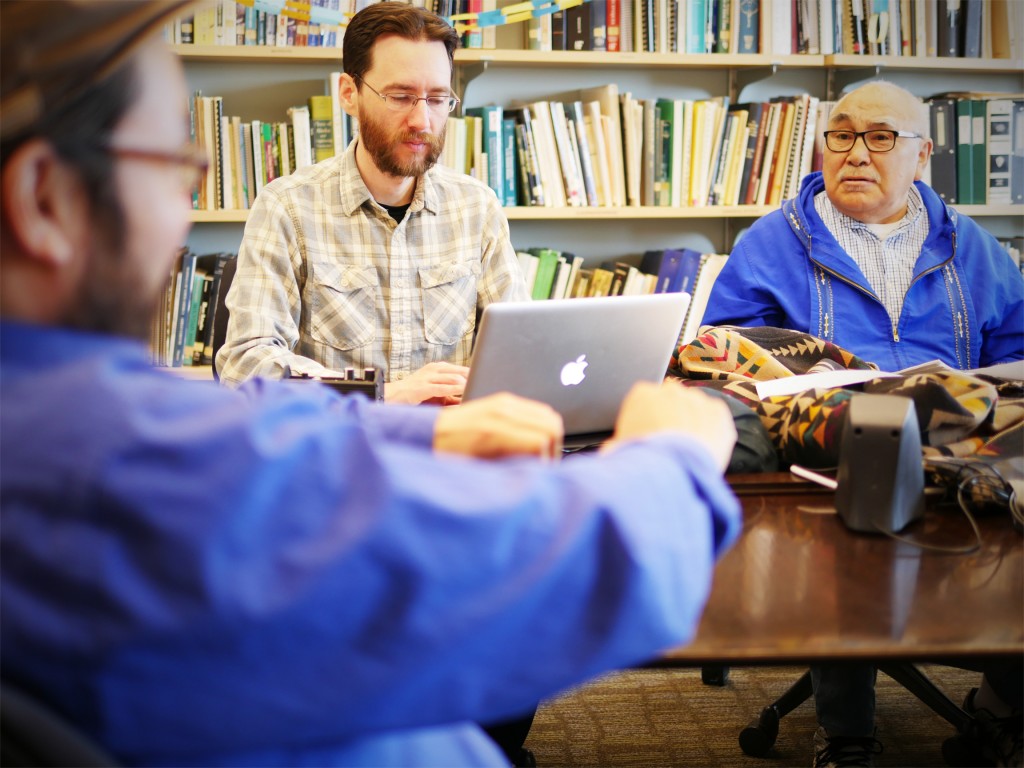
When we started to work on Never Alone: Foxtales, we knew we wanted to explore another story in the Alaska Native tradition, and to once again do it in partnership with the community. We also wanted to build on the elements of the original game that players really responded to with more complex and varied puzzles, new abilities for each of the characters and new environments.
Our team decided to base Foxtales on the story of ‘The Two Coastal Brothers,’ as told by Willie Panik Goodwin, Sr. The interdependence between the two brothers in this traditional tale was compelling because in many ways it reflected the interdependence between Nuna and Fox. One brother is an excellent hunter and fighter. The other is a strong swimmer. To defeat the main antagonist, the two brothers work together, each of their unique talents supporting the other and ultimately proving crucial to their success.
This idea of interdependence is not only an important theme in many Alaska Native tales, it also creates an opportunity for great gameplay. We found that players of the original game responded best to puzzles that required them to use the special abilities of the two player-controlled characters in interesting and unexpected ways. We were able to create more challenging and varied puzzles in Foxtales by embracing this approach, casting Nuna and Fox as the two characters from the traditional story and giving each character new abilities. Nuna, for example, can row and steer an umiaq (a sealskin canoe) and Fox (back in animal form) can interact with spirits to change the flow of underwater currents.

As this talk about canoes and currents implies, Foxtales is set in a different (and decidedly more nautical) environment than the original game: the waters and coasts of Northwest Alaska. At the risk of stating the obvious, Alaska is a pretty big place and is home to a diverse set of terrain and environments. Those environments also change with the seasons, so things aren’t as uniformly snowy as in the original game (which did involve finding the source of an endless blizzard, after all).
We made a decision early in our design process to set Foxtales both in a different location and in a different season: the Arctic Spring. This not only let us include new game mechanics, but also let us develop art and level designs that depict the beauty of new Alaskan environments that couldn’t have appeared in the original game – like an arctic prairie with the first blooms of spring peaking through the snowpack, the rapids and waterfalls of a river fed by melting snow or the subterranean lair of a new villain.

Ishmael Hope interviews his Uncle Willie Goodwin, Jr. as he recounts stories about his life as a Coastal Iñupiaq
To capture all of these environmental, cultural and thematic details faithfully, we once again approached development in an inclusive partnership with members of the Alaska Native community. We were very fortunate to be able to work with the family of Willie Panik Goodwin, Sr. – the storyteller whose work inspired Foxtales. Mr. Goodwin was the grandfather of our Lead Writer, Ishmael Hope. The Goodwin family not only collaborated with us on the game, but also hosted members of our development team in Kotzebue, Alaska. The knowledge shared by the Goodwin family and other members of the community not only informed our development process but is also reflected in the five new collectible Cultural Insight videos included in Foxtales. We received such positive critical and player feedback on these unlockable videos in the original game that we couldn’t conceive of doing Foxtales without them.
For our team, working on Never Alone: Foxtales was an opportunity to build on all that we learned in making the original game, and we hope the result is one that fans of the original game and new players will enjoy.
Never Alone: Foxtales will be available as a downloadable expansion to the original Never Alone (Kisima Ingitchuna) for PS4, Xbox One and Steam (PC & Mac) on July 28th, 2015.
Portions of this post originally appeared in an article on the official Sony PlayStation blog.

 Subscribe via RSS
Subscribe via RSS






